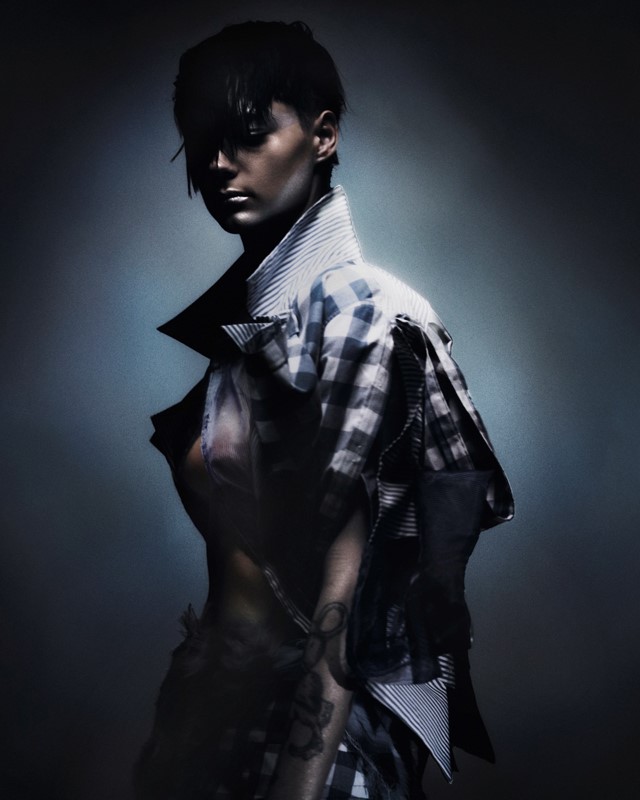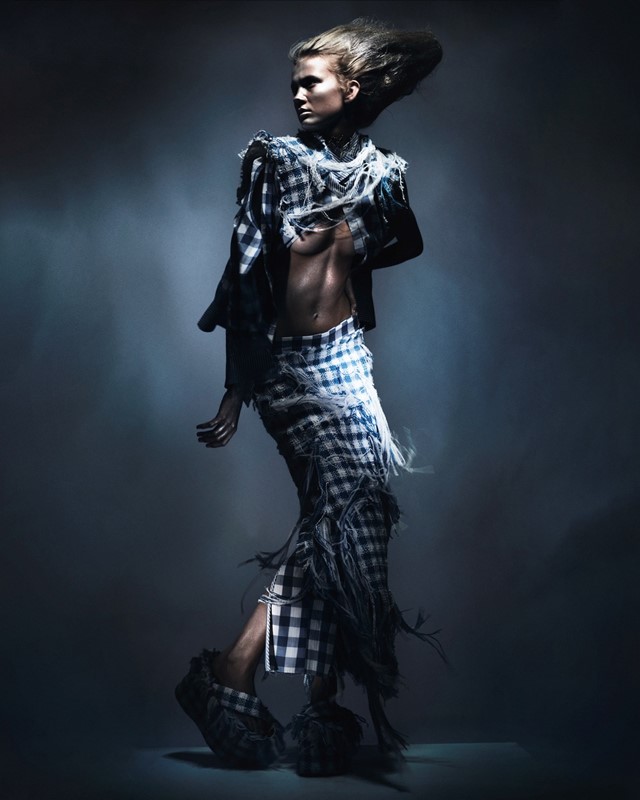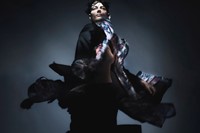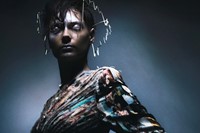For their Spring/Summer 2023 collection, Israeli designer Yoav Hadari mixed medical imaging and artificial intelligence to unpack a family history of dementia
- Who is it? Hadari is the namesake label from Sarabande scholar Yoav Hadari
- Why do I want it? Exquisitely tailored, upcycled designs that push regenerative fashion to the extreme
- Where can I find it? Hadari will be available soon through the label’s own website
Who is it? Born and raised in Israel, Yoav Hadari first dreamed of becoming an author. But, at the age of 16, their plan was derailed by the discovery of massively multiplayer online role player games (MMORPG) – video games which take place mainly within the realms of sci-fi and fantasy. “It was then that I realised that I was very passionate about character development. I really cared about what characters look like, because the way people look tells the story of who they are,” they reflect. “The more I researched fashion, the more I realised it was about personal identity as well as the identity of a time.” And so, they suddenly changed course to study a BA in Womenswear Design at Shenkar College in Tel Aviv.
In 2019, after four formative years working under both Daniel Roseberry (Schiaparelli’s current creative director) and Thom Browne at the latter’s eponymous label, Hadari decided it was time to head back to school and to start their own label focused on tailoring. With their sights set high on completing an MA at Central Saint Martins, they applied for the esteemed Sarabande Scholarship programme, which is organised by the Lee Alexander McQueen Foundation. “Iris Van Herpen was the guest judge, but it was during Covid, so I had a video interview,” Hadari gently recalls. “So, there she was, with myself, basically in my living room surrounded by boxes as I was about to move. But I guess she liked what I did and that’s how I got the scholarship.”
So much of Hadari’s offbeat creativity is underpinned by a process of revisiting and revising their personal experience – and gaming (and technology in general) acts as the narrative thread connecting their story to fashion. During Covid, Hadari collaborated with a friend on a four-level game demo entitled Quantum Desert. Each level ends “in you finding a piece of clothing or accessory, and you gain an ability through that,” they explain. To assign such generative power to clothing may seem ambitious, but the designer passionately believes in the potential of clothing to enhance, to give confidence to, and to progress one’s personal story.

In fact, their latest collection Cerebral Body began as a way for them to unpack a family history of dementia. The designer cleverly mined technology – from medical imaging to artificial intelligence – to turn an idea that was rooted in degenerative disease into something regenerative. “I became really interested in [the] brain’s functions,” they say. “Not just from the perspective of someone who suffered from brain illness, but in terms of the prospect of progression that research holds for our culture.” Cross-sections of the brain from MRI imaging were the basis of a floral-like print and EEG recordings of brainwaves inspired the designer’s unique “slicing technique,” by which they “take fabrics, slice them up, and then stitch them into steady intervals so it becomes a new surface.”
Why do I want it? Similar to how they mine personal experience, Hadari’s exquisite tailoring is a meticulous process of “dissociation,” as the designer calls it (a neat reference to psychology and the brain) and reconstruction of second-hand garments and deadstock fabrics. “How I work is by taking elements from tailoring that shouldn’t be in a certain place and then putting them there,” they explain. “For example, I take the plackets or the collar from shirting and put it all around in place of cuffs or hems. Or I misplace sleeves and put them around the waist.” In doing so, Hadari not only challenges the traditions of tailoring, but also representations of the human body.
In other garments from Cerebral Body – showcased in a fashion film by Ruth Hogben – their dedication to regeneration and respect for the environment is pushed to an ingenious extreme as they unravel textiles only to reconstruct them thread-by-thread as something else. Take for example the ‘Neurogenesis Jacket,’ which was originally a donated tweed skirt: “We un-wove everything and then re-stitched it. Just the panels for this jacket took two weeks to make before we even put the jacket together.”
Although these material processes are inherently analogue, Hadari remains committed to technology – a complete print for this collection was developed solely using artificial intelligence. Parts of faces were harvested from CCTV and then fed to a program “that generates faces that don’t exist but look absolutely like real people.” These fake faces were then made into a print design by a generative adversarial network (GANS). “I find it very interesting how a machine interprets a human concept,” muses the designer. “And I think that AI can become a collaborator. I work alone a lot of the time and having an AI counterpart can give me a different perspective on what I’m doing that I couldn’t have in any other way.”
Contrary to many designers who’s default desire is to get as big as possible, as soon as possible, Hadari is more concerned with “making sure that the integrity of the work stays intact” – which is much easier when you’re smaller. As they continue to grow, they “really want to be niche” à la French couture, crafting beautifully made clothes for specific clients. “I’m moving towards going deeper into all those high fabric manipulations,” they explain. “What gives me the most joy is to craft things that not only would people want to wear and talk about, but pieces that are really well-made and beautiful.”
Where can I find it? Hadari will be available soon through the label’s own website.






